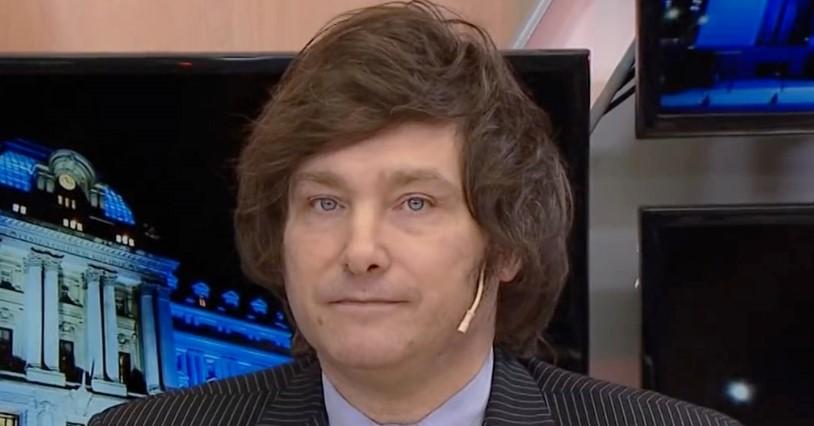
Argentina’s problem is not Milei.
The Central Bank of Argentina does not have to devalue the peso due to the victory of Javier Milei in the primaries. The Central Bank of Argentina and the Peronist government have been devaluing the peso and sinking the currency for years. It must devalue because the central bank has run out of reserves.
Argentina is not facing an “anti-system” or “far-right” threat. They already have a far-left and anti-system government. The extractive and confiscatory monetary and fiscal policies of the XXI Century Socialism championed by Peronist Fernandez de Kirchner. The so-called “Inclusive” monetary policy, as Axel Kicilloff, Cristina Fernandez de Kirchner’s ex economy minister, denominated it.
The Peronist policy of maximum interventionism as well as fiscal and monetary irresponsibility has destroyed Argentina and left the central bank without reserves.
The peso has lost more than 90% of its value against the US dollar since Alberto Fernández took office, and inflation in Argentina already exceeds 110% annualized, with 39% of the population living in poverty.
In the years of the “XXI Century Socialism” governments of Cristina Fernández de Kirchner and Alberto Fernández, a completely uncontrolled increase in the monetary base obliterated the local currency. The center-right Macri government, which took office briefly between Kirchner and Fernandez, made the mistake of thinking that gradual and soft measures could curb the inflationary spiral, especially because he did not consider the evidence of the time bomb left by Fernandez de Kirchner in future monetary issuance commitments via short-term debt at very high rates accumulated at the central bank (the Leliq, Lebac, and Pases). This central bank remunerated debt grew by 22 billion equivalent US dollars during the years of Cristina Fernández de Kirchner. The Macri government reduced it by $26 billion. These issuances of “remunerated” central bank debt are future monetary base increases and guaranteed inflation.
The government of Alberto Fernández has left a timebomb of Leliq and Pases that exceed 12% of GDP. Thus, a gigantic devaluation of the peso is guaranteed since the central bank’s liabilities exceed its reserves by several times. This is why the central bank must devalue.
According to data published by the Central Bank of the Argentine Republic in August 2023, Argentina has carried out the largest monetary experiment in the region, second only to Venezuela. The Monetary Base increased by 46.2% annually, 117.2% in two years, and 172% in three years. However, the monetary base, including deposits and the aforementioned Leliq, has soared by 392.6% in three years. This disaster is the legacy left by the Fernandez government.
Peronism embraced “XXI century socialism” and implemented the most damaging “exchange clamps” (cepo cambiario) that drain exporting sectors of reserves and force them to convert their dollars at fictitious exchange rates. This is state-sponsored theft that has destroyed the entry of new reserves to the country. Instead of maximizing reserves, this policy stopped export growth.
With the recent creation of the so-called “soybean dollar” (dólar soja), an artificial rate for agricultural producers to liquidate their foreign currency, in Argentina there are more than ten exchange rates.
How can a country have ten exchange rates against one currency? The answer is simple. All those exchange rates imposed by the government are forms of expropriation of wealth to confiscate the dollars of exporters and citizens at an unrealistic rate.
The government expropriates the recipients of US dollars with an exchange against the peso that the government itself would not find in any transaction on the open market.
This monetary madness finances uncontrolled political spending, as the Argentine state cannot be financed via debt as there is no confidence in its solvency as an issuer since it has defaulted on several occasions.
There is no real local or global demand for pesos, as investors and citizens know that the government will continue to print currency without control.
In Argentina, in 57% of the provinces, state employment is greater than private employment. The state increases public spending more than tax receipts and inflation, financing it by printing more pesos, which creates more poverty and higher inflation. Meanwhile, the taxation implemented by the Peronist governments is one of the most confiscatory in the region, reaching 106% of its profits for a Small and Medium Enterprise that pays all its taxes, according to the Doing Business report.
Thus, the government promises huge subsidies in a currency that is constantly losing value and presents itself as the solution to the problem created by its own fiscal and monetary policies. Peronism “gives away” money that is printed massively and has no value. The result, eighteen million poor citizens.
Many great Argentine economists have analyzed in detail the importance of dollarizing to end this spiral of perverse incentives that leads the government to make citizens more dependent by issuing a currency without value or demand. From Nicolas Cachanosky to Steve Hanke and many others, they remind us that Ecuador, Panama, or El Salvador successfully dollarized.
Argentina’s problem is not dollarization, but the evidence that they have an unviable and failed currency. Argentina is already dollarized in large part because citizens are fleeing the local currency.
Why is the Peso a worthless currency? Because the government and the central bank have been implementing their own Modern Monetary Theory under the idea that the country’s problems can be solved by issuing more currency. After years of monetary destruction, global and national demand for the peso is at historical lows.
The peso is, again in 2023, one of the worst currencies in the world against the US dollar, while the increase in the monetary base of the central bank of Argentina is an insane 46% year-to-date. And some people wonder why inflation is over 100%.
No, Argentina does not face an abyss if Milei becomes president. Argentina, a rich country with enormous potential, is already in the abyss.
Just like Chavismo in Venezuela, the Peronist governments have destroyed the currency and the productive fabric to boost political spending and turn the country into an economic wasteland where the salaries and savings of citizens are confiscated via high direct and indirect taxes as well as the inflationary tax.
Milei wants to end this monetary and fiscal insanity with policies that are not radical but logical. Stop the insane monetization of government spending, end the central bank’s dangerous inflationary measures, dollarize, cut excessive political expenditure, reduce taxes, open the economy, and allow free trade and investment to flow back to Argentina.
Something is very wrong in the developed world when some consider Milei a dangerous radical and say nothing about the radicalism implemented in the Fernandez-Kirchner years.
Argentina must implement serious fiscal and monetary policies to reach its enormous potential. Milei’s proposals are not anti-system, they are pro-logic.
Argentina’s problem is not Milei. The problem is that they have implemented point by point the fiscal and monetary policies that many so-called “progressive” parties demand.








